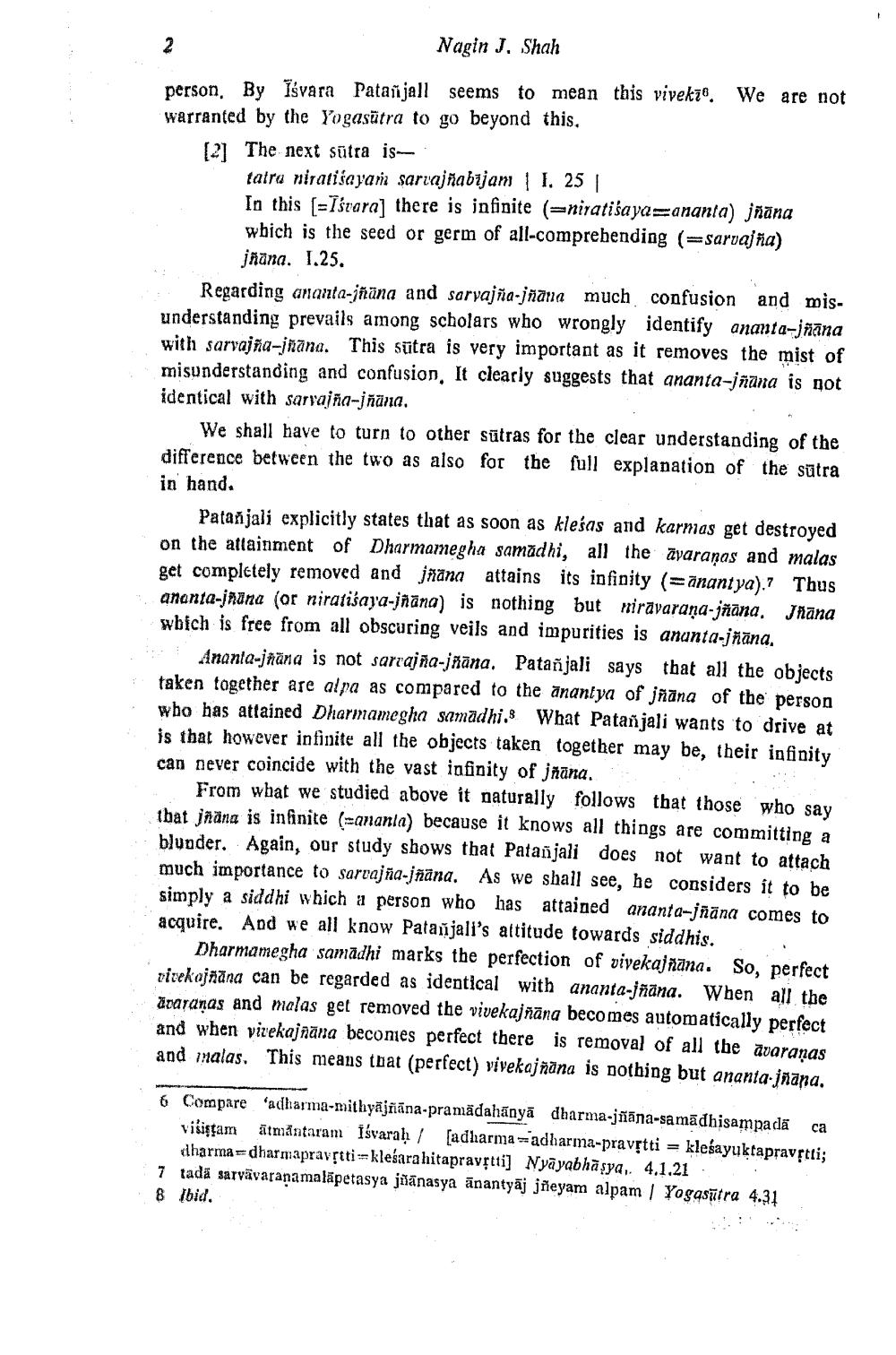Book Title: Sambodhi 1975 Vol 04 Author(s): Dalsukh Malvania, H C Bhayani Publisher: L D Indology Ahmedabad View full book textPage 4
________________ Nagin J. Shah person. By Isvara Patañjall seems to mean this vivek?". warranted by the Yogasätra to go beyond this. 2 [2] The next sūtra is We are not tatra niratisayam sarvajñabijam I. 25 | In this [=Isvara] there is infinite (=niratiśaya=ananta) jñāna which is the seed or germ of all-comprehending (=sarvajña) jñana. 1.25. Regarding ananta-jñāna and sarvajña-jñāna much confusion and misunderstanding prevails among scholars who wrongly identify ananta-jñāna with sarvajña-jñāna. This sutra is very important as it removes the mist of misunderstanding and confusion. It clearly suggests that ananta-jñāna is not identical with sarvajña-jñāna. We shall have to turn to other sutras for the clear understanding of the difference between the two as also for the full explanation of the sutra in hand. Patanjali explicitly states that as soon as klesas and karmas get destroyed on the attainment of Dharmamegha samadhi, all the avaraṇas and malas get completely removed and jñana attains its infinity (=anantya). Thus ananta-jnana (or niratiśaya-jñāna) is nothing but miravaraṇa-jñāna. Jñāna which is free from all obscuring veils and impurities is ananta-jñāna, Ananta-jñāna is not sarvajña-jñāna. Patanjali says that all the objects taken together are alpa as compared to the anantya of jñana of the person who has attained Dharmamegha samadhi. What Patanjali wants to drive at is that however infinite all the objects taken together may be, their infinity can never coincide with the vast infinity of jñana. From what we studied above it naturally follows that those who say that jääna is infinite (anania) because it knows all things are committing a blunder. Again, our study shows that Patanjali does not want to attach much importance to sarvajña-jñāna. As we shall see, he considers it to be simply a siddhi which a person who has attained ananta-jñāna comes to acquire. And we all know Patanjali's attitude towards siddhis. Dharmamegha samadhi marks the perfection of vivekajñana. So, perfect vivekajñāna can be regarded as identical with ananta-jñāna. When all the avaraṇas and malas get removed the vivekajñāna becomes automatically perfect and when vivekajñāna becomes perfect there is removal of all the avaraṇas and malas. This means that (perfect) vivekajñāna is nothing but ananta-jñāņa. 6 Compare 'adharma-mithyajñāna-pramädahanya dharma-jñāna-samādhisampada visistam ātmāntaram Isvarah [adharma adharma-pravṛtti = kleśayuktapravṛtti; dharma-dharmapravṛtti-kleśara hitapravṛtti] Nyayabhāṣya, 4.1.21 7 tada sarvävaraṇamalapetasya jñānasya anantyāj jñeyam alpam | Yogasūtra 4.31 8 Ibid. ca 1Page Navigation
1 2 3 4 5 6 7 8 9 10 11 12 13 14 15 16 17 18 19 20 21 22 23 24 25 26 27 28 29 30 31 32 33 34 35 36 37 38 39 40 41 42 ... 427
